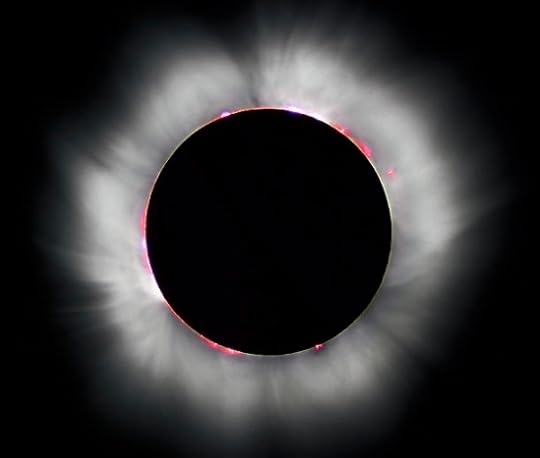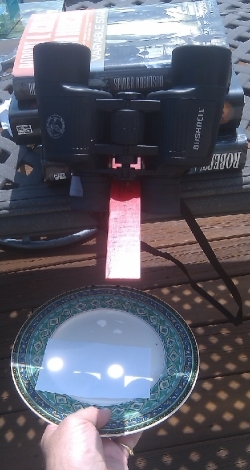Resources for The Upcoming Solar Eclipse

The 1999 solar eclipse as photographed through a telescope (and then Photoshop enhanced) by Luc Viatour in France (click for full credit)
As most people are probably aware, there will be a total eclipse of the sun visible from many parts of the United States. It will occur on August 21st, but the exact times depend on where you are. I received a question about how to best enjoy it, so thought I would compile some resources to help people who are interested. First, you can find out exactly when to expect the eclipse by going to this website:
https://www.timeanddate.com/eclipse/in.html
If you put in your city and state, it will tell you when to start viewing the eclipse, when it will be at its maximum, and when it will end. In addition, it will tell you the magnitude, which is the fraction of the sun that will be blocked by the moon. If it doesn’t have your city, just add a comma and the full name of your state, and it will bring up several other cities in that state. Choose the one closest to you.
The next thing to make clear is that YOU SHOULD NEVER LOOK DIRECTLY AT THE ECLIPSE! The sun produces a lot of light; too much for your eyes to handle. As a result, when you look directly at the sun, the light-sensing cells in your eyes can be overwhelmed. If they are overwhelmed for too long, they can die. Even though the sun is a lot dimmer during an eclipse, it still produces too much light for your eyes. However, it isn’t as difficult to look at as the uneclipsed sun, so you don’t notice that you are overwhelming your light-sensing cells. This can lead to solar retinopathy, which can cause serious vision problems.
So how can you enjoy the eclipse? This website gives you several different ways to safely view it:
http://www.deepskywatch.com/Articles/how-to-look-at-sun.html

Even without a tripod, it is easy to use binoculars to project the sun.
In my opinion, however, the best way is through projection. In my elementary science book, Science in the Beginning , I show students how to use binoculars to project the sun onto a white surface. Of course, you should never look at the sun through the binoculars! However, you can point the binoculars towards the sun while aiming their eyepieces at a white surface, such as what is shown in the picture on the left. The white circles on the paper are the sun. You can adjust the focus of the binoculars to make the circles nice and sharp. Obviously, having a tripod upon which you can mount your binoculars is best, but as you can see from the picture, you can set up a makeshift holder using heavy books and a ruler.Interestingly enough, however, you don’t need to make something as complicated as the setup shown on the left or even a pinhole projection camera such as what is discussed in the link above. In fact, a plain kitchen colander will project multiple images of the sun. Just put a colander between a white surface and the sun, as shown in this video. The holes in the colander will project the sun on the white surface, and you can watch multiple images of the eclipse. Adjusting the distance between the white surface and the colander will adjust the focus of the images. Aristotle (384-322 BC) was the first to record this method of viewing an eclipse. He also noted that you can simply look at the ground under a tree that has broad leaves. You will see multiple images of the eclipse happening on the ground, as projected from tiny openings in the tree’s foliage. I confirmed this during the 1999 solar eclipse pictured at the top of this post.
If you decide to use the solar viewing glasses that have become popular, you should definitely test them before you use them. Even if they are made properly, they can be damaged during shipping and storage, and you don’t want to risk looking through damaged glasses. This site discusses how you can make sure your glasses are safe:
https://www.space.com/37698-solar-eclipse-glasses-safety-check.html
I would also recommend cupping your hands around the sides of the glasses to block out peripheral light.
I hope these resources will help you enjoy the eclipse safely!
Jay L. Wile's Blog
- Jay L. Wile's profile
- 31 followers



